|
시장보고서
상품코드
1627942
관상동맥우회술 시장 기회, 성장 촉진요인, 산업 동향 분석, 예측(2024-2032년)Coronary Artery Bypass Graft Market Opportunity, Growth Drivers, Industry Trend Analysis, and Forecast 2024 - 2032 |
||||||
세계의 관상동맥우회술 시장은 2023년에 118억 달러의 평가액에 달하며, 2024-2032년 CAGR 7.1%로 성장할 것으로 예측됩니다.
관상동맥우회술(CABG)은 관상동맥 질환(CAD)에 대한 외과적 해결책으로, 이식편을 사용하여 심장으로 가는 새로운 혈류 경로를 만드는 것입니다. 일반적으로 이 이식편은 다리의 복재 정맥이나 가슴의 내유동맥과 같은 환자 신체의 혈관 중 일부에서 채취됩니다.
시장은 제품별로 이식편, 리트랙터, 심장 포지셔너, 조직 안정제, 기타로 나뉘며, 이식편은 복재 정맥, 내흉동맥, 기타 이식편 유형으로 세분화되며, 2023년에는 이식편 분야만 31억 달러를 넘은 것으로 평가되었습니다. 조직공학, 3D 프린팅 등의 기술 개선으로 이식편 생산이 발전하여 자연 혈관을 충실하게 모방한 제품이 탄생하여 적합성이 향상되고 거부반응이 감소하며 수술 후 합병증이 감소했습니다. 합성, 생체공학, 약제용출 옵션과 같은 혁신적인 이식 재료는 내구성과 생체 적합성을 향상시키고 재협착을 감소시키며 환자의 회복을 촉진합니다.
관상동맥우회술은 크게 관상동맥우회술(CABG)과 저침습적 직접 CABG로 나뉩니다. 기존 CABG는 2023년 매출 점유율 55.1%를 차지하며 정밀한 관리가 필요한 복잡한 다발성 질환 환자들에게 여전히 선호되고 있습니다. 좌식 생활습관, 식습관 장애, 당뇨병, 고혈압 등의 요인으로 인해 전 세계에서 CAD가 증가함에 따라 환자의 예후를 개선하기 위한 CABG 수술에 대한 수요가 증가하고 있습니다.
| 시장 범위 | |
|---|---|
| 개시년 | 2023 |
| 예측년 | 2024-2032 |
| 개시 금액 | 118억 달러 |
| 예측 금액 | 215억 달러 |
| CAGR | 7.1% |
미국의 관상동맥우회술 시장은 2023년에 35억 달러를 넘으며, 2032년까지 CAGR 6.7%로 성장할 것으로 예측됩니다. 미국의 병원에서는 저침습수술 및 로봇 지원 CABG 등의 첨단 수술 기법을 채택하고 있으며, 회복 시간이 단축되고 수술 후 합병증이 적어 이 수술의 매력이 증가하고 있습니다. 미국에서는 다발성 병변이 많은 것도 CABG 수술 수요 증가에 기여하고 있습니다.
목차
제1장 조사 방법과 조사 범위
제2장 개요
제3장 업계 인사이트
- 에코시스템 분석
- 업계에 대한 영향요인
- 촉진요인
- 심혈관질환의 유병률 증가
- 기술의 진보
- 고혈압의 유병률 상승
- 유리한 상환 시나리오
- 업계의 잠재적 리스크 & 과제
- 수술에 수반하는 고비용
- 수술에 수반하는 합병증
- 촉진요인
- 성장 가능성 분석
- 규제 상황
- 기술적 전망
- 향후 시장 동향
- 갭 분석
- Porter의 산업 분석
- PESTEL 분석
제4장 경쟁 구도
- 서론
- 기업 점유율 분석
- 기업 매트릭스 분석
- 주요 시장 기업의 경쟁 분석
- 경쟁 포지셔닝 매트릭스
- 전략 대시보드
제5장 시장 추산·예측 : 제품별, 2021-2032년
- 주요 동향
- 그래프트
- 복재정맥 그래프트
- 내흉동맥 그래프트
- 기타 그래프트
- 리트랙터
- 심장 포지셔너
- 조직 안정제
- 기타 제품
제6장 시장 추산·예측 : 방법별, 2021-2032년
- 주요 동향
- 기존형(온 펌프) CABG
- 저침습직접 CABG
- 오프 펌프 CABG
- 키홀 CABG
- 기타 저침습 CABG 수술
제7장 시장 추산·예측 : 수술 유형별, 2021-2032년
- 주요 동향
- 단회 CABG 수술
- 이중 CABG 수술
- 삼중 CABG 수술
- 사중 CABG 수술
제8장 시장 추산·예측 : 최종사용자별, 2021-2032년
- 주요 동향
- 병원
- 심장병 센터
- 기타 최종사용자
제9장 시장 추산·예측 : 지역별, 2021-2032년
- 주요 동향
- 북미
- 미국
- 캐나다
- 유럽
- 독일
- 영국
- 프랑스
- 스페인
- 이탈리아
- 아시아태평양
- 중국
- 일본
- 인도
- 호주
- 한국
- 라틴아메리카
- 브라질
- 멕시코
- 아르헨티나
- 중동 및 아프리카
- 남아프리카공화국
- 사우디아라비아
- 아랍에미리트
제10장 기업 개요
- Abbott Laboratories
- AngioDynamics
- AtriCure
- B. Braun Melsungen AG
- Boston Scientific
- Cardinal Health
- CryoLife
- Edwards Lifesciences
- Johnson & Johnson
- LivaNova
- Medline Industries
- Medtronic
- Nipro Corporation
- Stryker Corporation
- Terumo Corporation
The Global Coronary Artery Bypass Graft Market reached a valuation of USD 11.8 billion in 2023 and is anticipated to grow at a CAGR of 7.1% from 2024 to 2032. Coronary artery bypass graft (CABG) is a surgical solution for coronary artery disease (CAD), creating a new pathway for blood flow to the heart using a graft. Typically, this graft comes from a section of a blood vessel in the patient's body, such as the saphenous vein from the leg or the internal mammary artery from the chest.
The market divides by-products into grafts, retractors, heart positioners, tissue stabilizers, and others, with grafts further segmented into saphenous veins, internal thoracic arteries, and other graft types. In 2023, the grafts segment alone was valued at over USD 3.1 billion. Technological improvements, such as tissue engineering and 3D printing, have advanced graft production, resulting in products that closely mimic natural vessels, enhancing compatibility, lowering rejection rates, and reducing post-operative complications. Innovative materials in grafts, including synthetic, bioengineered, and drug-eluting options, improve durability and biocompatibility, reducing restenosis and supporting better patient recovery outcomes, which, in turn, fosters market expansion.
By method, the coronary artery bypass graft market is segmented into traditional (on-pump) and minimally invasive direct CABG. Traditional CABG, which had a leading revenue share of 55.1% in 2023, remains the preferred choice for complex, multi-vessel disease cases requiring precise control. The rise in CAD globally-driven by factors like sedentary lifestyles, poor diet, diabetes, and hypertension-has led to a growing need for CABG procedures to improve patient outcomes.
| Market Scope | |
|---|---|
| Start Year | 2023 |
| Forecast Year | 2024-2032 |
| Start Value | $11.8 Billion |
| Forecast Value | $21.5 Billion |
| CAGR | 7.1% |
U.S. coronary artery bypass graft market exceeded USD 3.5 billion in 2023 and is projected to grow at a CAGR of 6.7% through 2032. U.S. hospitals are adopting advanced surgical techniques, including minimally invasive and robotic-assisted CABG, which offer faster recovery times and fewer post-surgical complications, making the procedure increasingly appealing. The prevalence of multi-vessel disease in the U.S. also contributes to the rising demand for CABG procedures.
Table of Contents
Chapter 1 Methodology & Scope
- 1.1 Market scope & definitions
- 1.2 Research design
- 1.2.1 Research approach
- 1.2.2 Data collection methods
- 1.3 Base estimates & calculations
- 1.3.1 Base year calculation
- 1.3.2 Key trends for market estimation
- 1.4 Forecast model
- 1.5 Primary research and validation
- 1.5.1 Primary sources
- 1.5.2 Data mining sources
Chapter 2 Executive Summary
- 2.1 Industry 360° synopsis
Chapter 3 Industry Insights
- 3.1 Industry ecosystem analysis
- 3.2 Industry impact forces
- 3.2.1 Growth drivers
- 3.2.1.1 Increasing in prevalence of cardiovascular diseases
- 3.2.1.2 Growing technological advancement
- 3.2.1.3 Rising prevalence of hypertension
- 3.2.1.4 Favorable reimbursement scenario
- 3.2.2 Industry pitfalls & challenges
- 3.2.2.1 High cost associated with surgery procedures
- 3.2.2.2 Complications associated with the surgery
- 3.2.1 Growth drivers
- 3.3 Growth potential analysis
- 3.4 Regulatory landscape
- 3.5 Technological landscape
- 3.6 Future market trends
- 3.7 Gap analysis
- 3.8 Porter's analysis
- 3.9 PESTEL analysis
Chapter 4 Competitive Landscape, 2023
- 4.1 Introduction
- 4.2 Company market share analysis
- 4.3 Company matrix analysis
- 4.4 Competitive analysis of major market players
- 4.5 Competitive positioning matrix
- 4.6 Strategy dashboard
Chapter 5 Market Estimates and Forecast, By Product, 2021 - 2032 ($ Mn)
- 5.1 Key trends
- 5.2 Grafts
- 5.2.1 Saphenous vein grafts
- 5.2.2 Internal thoracic artery grafts
- 5.2.3 Other grafts
- 5.3 Retractors
- 5.4 Heart positioners
- 5.5 Tissue stabilizers
- 5.6 Other products
Chapter 6 Market Estimates and Forecast, By Method, 2021 - 2032 ($ Mn)
- 6.1 Key trends
- 6.2 Traditional (on-pump) CABG
- 6.3 Minimally invasive direct CABG
- 6.3.1 Off-pump CABG
- 6.3.2 Keyhole CABG
- 6.3.3 Other minimally invasive CABG surgeries
Chapter 7 Market Estimates and Forecast, By Surgery Type, 2021 - 2032 ($ Mn)
- 7.1 Key trends
- 7.2 Single CABG surgery
- 7.3 Double CABG surgery
- 7.4 Triple CABG surgery
- 7.5 Quadruple CABG surgery
Chapter 8 Market Estimates and Forecast, By End Use, 2021 - 2032 ($ Mn)
- 8.1 Key trends
- 8.2 Hospitals
- 8.3 Cardiology centers
- 8.4 Other end users
Chapter 9 Market Estimates and Forecast, By Region, 2021 - 2032 ($ Mn)
- 9.1 Key trends
- 9.2 North America
- 9.2.1 U.S.
- 9.2.2 Canada
- 9.3 Europe
- 9.3.1 Germany
- 9.3.2 UK
- 9.3.3 France
- 9.3.4 Spain
- 9.3.5 Italy
- 9.4 Asia Pacific
- 9.4.1 China
- 9.4.2 Japan
- 9.4.3 India
- 9.4.4 Australia
- 9.4.5 South Korea
- 9.5 Latin America
- 9.5.1 Brazil
- 9.5.2 Mexico
- 9.5.3 Argentina
- 9.6 Middle East and Africa
- 9.6.1 South Africa
- 9.6.2 Saudi Arabia
- 9.6.3 UAE
Chapter 10 Company Profiles
- 10.1 Abbott Laboratories
- 10.2 AngioDynamics
- 10.3 AtriCure
- 10.4 B. Braun Melsungen AG
- 10.5 Boston Scientific
- 10.6 Cardinal Health
- 10.7 CryoLife
- 10.8 Edwards Lifesciences
- 10.9 Johnson & Johnson
- 10.10 LivaNova
- 10.11 Medline Industries
- 10.12 Medtronic
- 10.13 Nipro Corporation
- 10.14 Stryker Corporation
- 10.15 Terumo Corporation



















